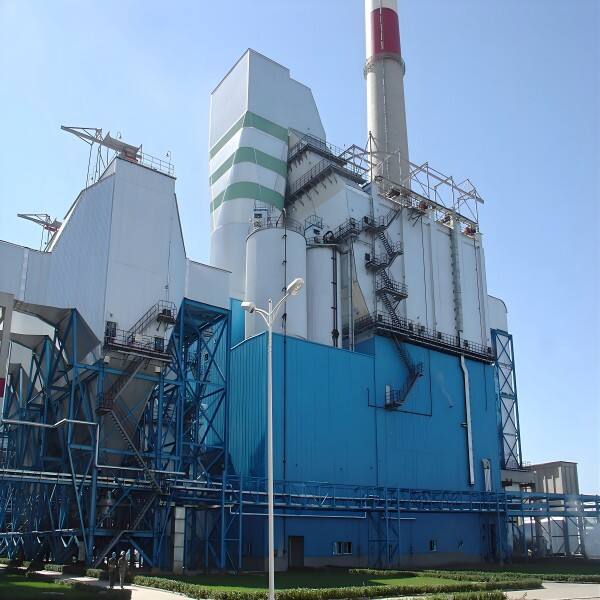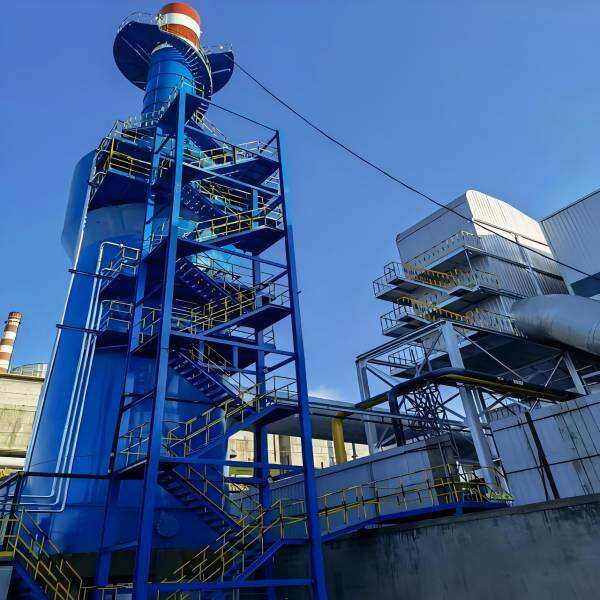The Critical Role of Selective Catalytic Reduction in Modern Power Generation
Power plants worldwide face mounting challenges to meet increasingly stringent environmental regulations while maintaining operational efficiency. Selective catalytic reduction has emerged as the leading solution for nitrogen oxide (NOx) reduction in fossil fuel-based power generation. This technology's widespread adoption stems from its unparalleled effectiveness in transforming harmful emissions into harmless byproducts. The implementation of selective catalytic reduction systems represents a significant advancement in clean energy technology, offering power plant operators a reliable method to achieve compliance with air quality standards.
Understanding Selective Catalytic Reduction Technology
The Chemical Process Behind Emission Reduction
Selective catalytic reduction operates through an intricate chemical reaction that converts nitrogen oxides into nitrogen and water vapor. When flue gases pass through the system, a precisely measured amount of ammonia or urea is injected into the exhaust stream. This mixture then encounters a specially designed catalyst that facilitates the reduction reaction at optimal temperatures. The process demonstrates remarkable specificity, targeting only NOx compounds while leaving other combustion byproducts unaffected. Modern selective catalytic reduction systems achieve conversion rates exceeding 90%, making them indispensable for power plants operating under strict emission limits. The temperature window for optimal performance typically ranges between 300-400°C, requiring careful system design to maintain these conditions.
Essential System Components and Their Functions
A complete selective catalytic reduction installation comprises several sophisticated subsystems working in concert. The ammonia storage and injection system must maintain precise control over reagent dosing to ensure complete NOx reduction without excess ammonia slip. Catalyst modules, often arranged in honeycomb configurations, provide maximum surface area for the chemical reactions to occur. Sophisticated control systems continuously monitor flue gas composition, adjusting parameters in real-time to maintain peak efficiency. Additional components include static mixers for uniform reagent distribution, soot blowers to maintain catalyst cleanliness, and bypass dampers for system maintenance. The integration of these elements creates a comprehensive solution capable of handling the variable operating conditions typical in power generation.

Operational Advantages of Selective Catalytic Reduction Systems
Unmatched NOx Reduction Performance Metrics
The performance characteristics of selective catalytic reduction systems set them apart from alternative NOx control technologies. While other methods might achieve 30-70% reduction rates, selective catalytic reduction consistently delivers 90-95% NOx removal efficiency. This exceptional performance remains stable across varying load conditions, from base load operation to rapid load changes. The technology's reliability stems from decades of refinement in catalyst formulations and system engineering. Power plants implementing selective catalytic reduction can confidently meet even the most stringent emission regulations, including those requiring single-digit ppm NOx levels. The systems maintain this high performance throughout extended operating periods with proper maintenance, demonstrating remarkable durability in harsh power plant environments.
Fuel Flexibility and System Adaptability
One of the most significant advantages of selective catalytic reduction technology lies in its compatibility with diverse fuel types. Whether burning high-sulfur coal, low-NOx natural gas, or alternative biofuels, the systems can be optimized for each application. This flexibility proves particularly valuable as power generation evolves toward more diverse fuel portfolios. The technology adapts seamlessly to co-firing scenarios and fuel switching operations common in modern power plants. System designers can tailor catalyst formulations and reactor configurations to address specific fuel characteristics and combustion profiles. This adaptability ensures that selective catalytic reduction remains a viable solution as power generation technologies continue to evolve toward cleaner energy sources.
Implementation Challenges and Engineering Solutions
Addressing Ammonia Slip and Catalyst Degradation
While selective catalytic reduction offers exceptional performance, its implementation presents several technical challenges requiring careful engineering solutions. Ammonia slip, the unintended release of unreacted ammonia, can create operational issues and secondary emissions. Advanced control algorithms now minimize this phenomenon through precise dosing control and real-time performance monitoring. Catalyst degradation represents another significant challenge, with poisoning from alkaline metals and masking from particulate matter being primary concerns. Modern systems incorporate soot blowers, catalyst cleaning systems, and poison-resistant catalyst formulations to extend operational life. Temperature management also proves critical, as operation outside the optimal range can reduce efficiency and damage system components.
Economic Considerations and Cost Optimization
The capital investment required for selective catalytic reduction systems represents a significant consideration for power plant operators. However, when evaluating total lifecycle costs, the technology demonstrates compelling economic advantages. Modern designs emphasize modular construction, allowing for phased implementation and reduced downtime during installation. Catalyst management strategies, including cleaning and regeneration programs, help extend the intervals between costly replacements. Energy consumption remains minimal compared to the system's environmental benefits, with most designs incorporating energy recovery features. When considering potential regulatory penalties for non-compliance and the public relations value of cleaner operations, selective catalytic reduction often proves to be the most cost-effective NOx control solution available.
Emerging Developments in SCR Technology
Next-Generation Catalyst Materials
Research institutions and technology providers continue to push the boundaries of selective catalytic reduction performance through advanced catalyst development. Novel formulations incorporating zeolites and other molecular sieve materials offer improved low-temperature performance and resistance to poisoning. These innovations expand the potential applications of selective catalytic reduction beyond traditional power plant settings. Catalyst substrate designs are evolving to reduce pressure drop while maintaining high surface area, lowering the parasitic power requirements of the systems. Manufacturers are also developing specialized formulations for specific fuel types and operating conditions, further optimizing performance across diverse applications.
Integration with Other Emission Control Systems
The future of selective catalytic reduction lies in its integration with complementary pollution control technologies. Combined systems incorporating selective catalytic reduction with particulate collectors and sulfur dioxide scrubbers create comprehensive air quality solutions. Emerging designs coordinate these systems to maximize overall efficiency while minimizing operational costs. The technology also shows promise in hybrid configurations with emerging carbon capture systems, where NOx reduction prior to carbon capture improves the efficiency of both processes. These integrated approaches position selective catalytic reduction as a cornerstone technology in the transition to cleaner power generation.
Regulatory Landscape and Market Drivers
Global Emission Standards Evolution
Environmental regulations worldwide continue to tighten NOx emission limits, driving increased adoption of selective catalytic reduction technology. Regions with the most stringent requirements, including the European Union, North America, and parts of Asia, have seen nearly universal implementation in fossil fuel power plants. Emerging economies are following suit as they implement more rigorous air quality standards. These regulatory developments create a growing global market for selective catalytic reduction systems and services. The technology's proven track record in meeting diverse regulatory requirements ensures its continued relevance as standards evolve toward even stricter limits in coming years.
Economic Incentives and Sustainability Initiatives
Beyond regulatory compliance, numerous economic factors favor selective catalytic reduction adoption. Many jurisdictions offer tax incentives and grants for emission reduction projects, improving the financial case for implementation. Carbon pricing mechanisms increasingly account for NOx emissions, creating additional economic drivers. Corporate sustainability initiatives and environmental stewardship programs also contribute to the growing demand for effective NOx control solutions. These factors combine to make selective catalytic reduction not just a regulatory requirement, but a strategic investment for forward-thinking power generators.
FAQ
What maintenance does selective catalytic reduction require?
Regular inspection, catalyst cleaning, and periodic replacement of consumable components are essential for optimal performance.
How does selective catalytic reduction impact plant efficiency?
The system creates minimal backpressure and uses small amounts of energy, with overall plant efficiency impact typically below 0.5%.
Can selective catalytic reduction handle load fluctuations?
Modern systems are designed to maintain performance across the full range of plant operating conditions.
Table of Contents
- The Critical Role of Selective Catalytic Reduction in Modern Power Generation
- Understanding Selective Catalytic Reduction Technology
- Operational Advantages of Selective Catalytic Reduction Systems
- Implementation Challenges and Engineering Solutions
- Emerging Developments in SCR Technology
- Regulatory Landscape and Market Drivers
- FAQ


